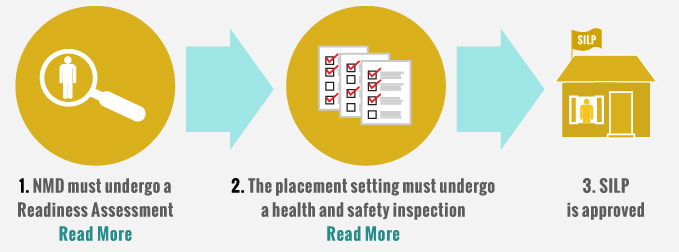PLACEMENTS
The Supervised Independent Living Placement (SILP)
The Supervised Independent Living Placement (SILP) is one of the new placement options for youth participating in extended foster care. Of all placement options available, the SILP provides the least amount of support and supervision, and the highest amount of autonomy. The SILP is not a licensed placement, but one that is approved by a NMD’s county social worker or probation officer.
ELIGIBLE LIVING SETTINGS FOR A SILP:
Private market housing
- Apartment
- Renting a room
- Single Room Occupancies (SROs)*
Dorms/university settings
*SROs should only be considered in areas where rent is extremely high, and only when the building and environment is conducive to a safe and healthy lifestyle for the NMD.
SILPs are appropriate for those NMDs who are high functioning (mentally sound and able to live without supportive services) and able to live independently (free from adult guidance, supervision and services, other than a monthly visit from a social worker or probation officer).
The exception is a SILP that includes assistance from a permanent connection, including tribal member, in addition to a social worker or probation officer, which could include living skills training.
What type of financial support can a youth receive in a SILP?
Who is Living in the Supervised Independent Living Placement?
Download an April 2013 brief by the John Burton Foundation.
STEPS TO APPROVING A SILP:

Once the SILP has been approved, a SILP Approval and Placement Agreement (SOC 157A) is completed by the NMD’s social worker or probation officer along with the NMD.
For more information on SILP related topics, such as moving from one SILP to another, and residing in a SILP out of state, refer to the AB 12 Primer.
California Social Work Education Center (CalSWEC) training for social workers and probation officers which provides information and guidelines to assist with the process of approving a SILP placement, is accessible by following this LINK.

